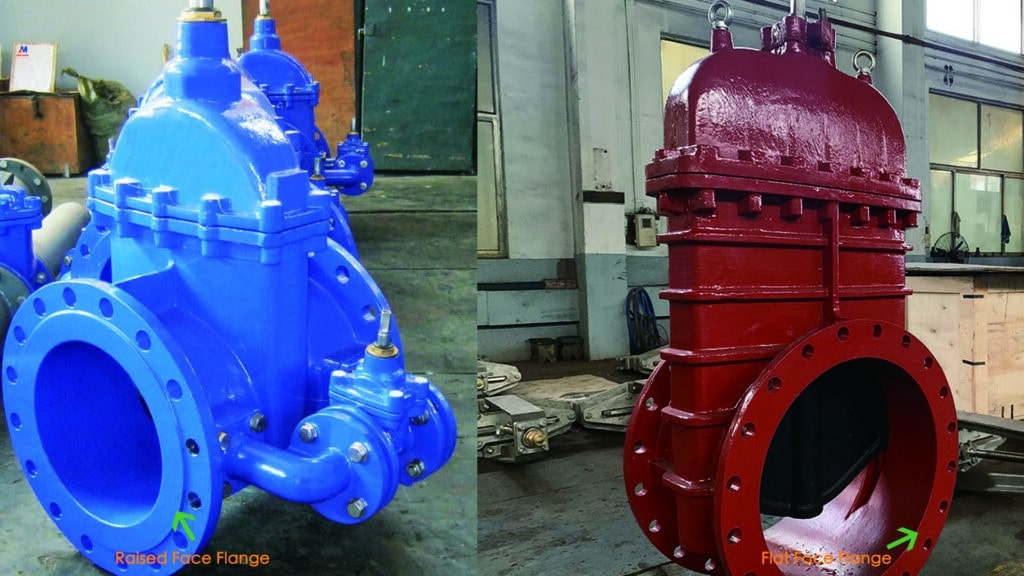Raised Face Flange
A Raised Face flange, abbreviated as RF flange, refers to a flange with a raised ring. Flanges are a common method of connecting pipes, and those with a raised face are the most commonly used in flange connections.
A Raised Face flange is characterized by a raised ring on its sealing surface (as shown in the diagram below). The height and width of this raised ring increase with the flange size. When two flanges are connected with tightening bolts, the two raised portions are compressed against each other due to the bolt tightening. This compression extrude the rubber gasket between the two flanges, creating a seal.

Machining is only required on the raised face of the Raised Face flange to ensure a flat and smooth surface for proper seal. The remaining non-sealing portions do not require machining.
Raised Face flanges are generally used in conjunction with half face flange gaskets(also called ring type flange gasket).
Typically, Raised Face flanges have groove line(also called water line) on the raised part to enhance sealing performance, as below photo
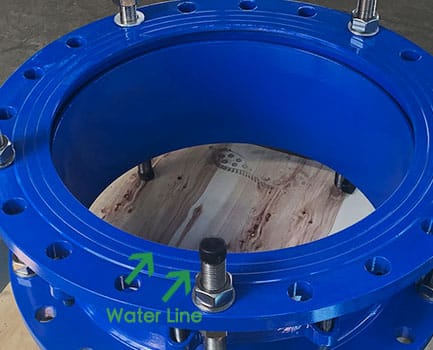
Judberd offer good quality flange pipe fitting and valves(as above judberd dismantling joint photo)with raised face flange connection.If you need, please feel free to contact us.
Flat Face Flange
Flat Face flange, abbreviated as FF flange, refers to a flange with a totally flat sealing surface, without raised ring,This type of flange achieves sealing by compressing a gasket across the entire flat surface.
Compared to RF flange, FF flange requires machining of the entire flange sealing surface to ensure good sealing performance. Flat Face flanges requires a full face flange gasket.

Normally groove line(also called water line) is needn’t for flat face flange. However, if required by the customer, a few grooves line can be added near the inner diameter of the flange to improve sealing performance.
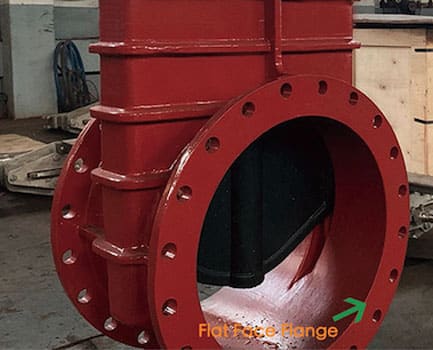
Judberd is competitive manufacturer for ductile iron pipe fitting and valves with flat face flange connection(as above judberd valves photo),if you need ,feel free to contact us.
Difference between Raised Face and Flat Face Flange
Since the Raised Face flange achieves sealing through the raised portion, when tightening the bolts, only the raised portion undergoes compression. Compared to the Flat Face flange, the compression force is greater, resulting in better sealing performance. Therefore, Raised Face flanges are suitable for high-pressure and high-temperature environments, but they require stronger bolts. In high-pressure environments, it is recommended to use high-strength bolts, such as grade 6.8, 8.8, 10.8, or higher.
Bigger pressure require larger outer diameter, flange thickness, and larger flange holes center distance. Also the number and size of bolts need to be larger.
Because the Raised Face flange undergoes larger deformation during sealing compared to the Flat Face flange, it experiences higher stress. Therefore, caution is needed with materials prone to breakage under stress, such as plastic, GRP, gray iron, etc. In high-pressure environments, it is advisable to avoid using these materials and opt for materials like ductile iron, carbon steel, stainless steel, which can withstand higher stress.
In contrast, the Flat Face flange achieves sealing through the entire flange face, resulting in minimal deformation. Due to the lower compression between the two flange faces, Flat Face flanges cannot handle high pressure or high temperature.
Because of the smaller deformation in Flat Face flanges, the material strength requirements for the flange are lower, and the bolt strength requirements are also lower than those for Raised Face flanges. Flat Face flanges are commonly used in American standard flanges.
No matter you need raised face flange or flat face flange type pipe fittings or valves from china, judberd can always be your competitive partner.
Half Face Flange Gasket
Half Face flange gasket refers to a flange with only one ring and no flange hole gasket. As shown below, the half-face gasket has three dimensions: the inner diameter, outer diameter, and gasket thickness. The thickness of the gasket increases with the size of the flange.
During the installation of a half-face flange gasket, two flange locating bolts can be installed first. Since there are no bolt hole restrictions, the half-face flange gasket is easy to position.
Half Face flange gaskets are generally used in conjunction with Raised Face flanges.
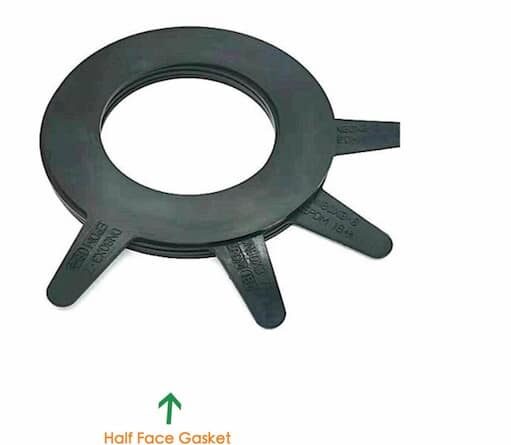
Full Face Flange Gasket
A Full Face flange gasket is designed according to the dimensions of the flange sealing surface. Except for the gasket thickness, all dimensions of the gasket match those of the flange sealing surface. When purchasing this gasket, considerations include the inner diameter, outer diameter, center distance of bolt holes, the number and size of bolt holes, and the thickness of the full face flange gasket which increases with the size of the flange.
During the installation of a full face flange gasket, it needs to be aligned with the flange sealing surface, including the inner diameter, outer diameter, and flange holes, before assemble any bolts.
Full face gaskets are generally used in conjunction with Flat Face flanges.
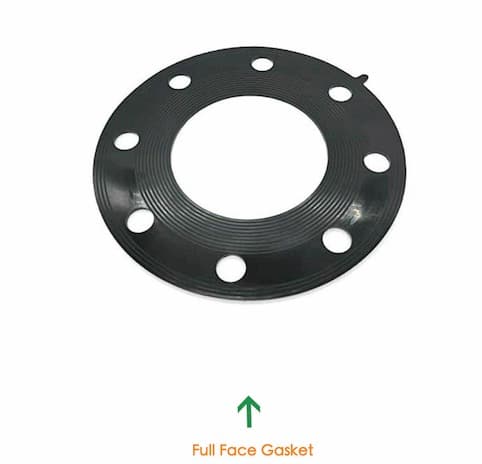
As a manufacturer of flanges, pipe fittings, and valves in China, Judberd can recommend whether to use a Raised Face flange or Flat Face flange based on the actual working conditions. If you have any questions, feel free to contact us.

